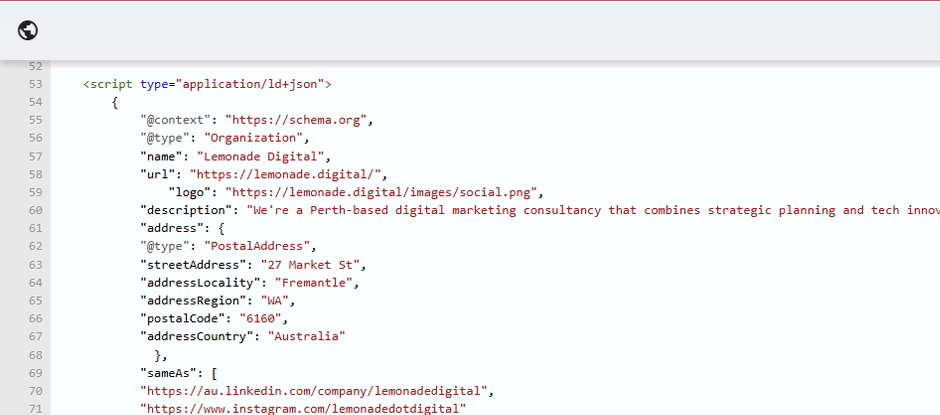How to rank in AI search: AI SEO simplified



After years of refining your SEO strategy, you might be ranking well in Google.
But the search game is changing yet again.
Right now, 13.14% of all Google queries trigger AI Overviews, delivering instant answers without clicks.
And that's just Google.
Platforms like ChatGPT, Claude, Perplexity, Google Gemini and Microsoft Copilot are now where millions of people turn for answers, without ever visiting a traditional search engine. In Australia, 49% of people used generative AI in the past year (up from 38% in 2023).
It’s no wonder marketers are wondering what’s next.
The good news? AI SEO (or GEO/AEO/LLMO whatever you’d like to call it) is not a complete reinvention of SEO.
It’s more of an evolution. The layer you add to ensure your brand is visible in AI powered answers, not just in the traditional "blue links" in search engine results pages.
The naming debate: GEO, AEO, LLMO… or SEO for AI?
You might have seen a growing list of acronyms:
- GEO (Generative Engine Optimisation)
- AEO (Answer Engine Optimisation)
- LLMO (Large Language Model Optimisation)
Industry leaders like Rand Fishkin (Remember Moz?) have pointed out that while these terms are interesting, they can cause some confusion. In many cases, it could be clearer to say that we are performing: "SEO for AI".
What is AI search?
AI search replaces static results with intelligent, conversational answers.
Instead of listing websites, generative engines pull from multiple trusted sources and synthesise an answer.
With the Australian AI market projected to reach AUD $9.41 billion by 2025, the opportunity is massive. Customers arriving via AI recommendations are often more valuable than standard SEO traffic because they’re presold on your business.
GEO vs SEO: Key differences
| Aspect | SEO (Traditional) | GEO (AI Search) |
|---|---|---|
| Goal | Rank in SERPs | Be cited in AI generated answers |
| Traffic source | Clickthrough from search results | Brand mentions in AI responses |
| Content format | Web pages, blog posts | Structured, quotable, verified content |
| Success metric | Organic traffic | Citations & AI mentions |
| User journey | Click → Browse → Convert | Answer → Brand trust → Convert |
Search everywhere & organic growth
Here’s the truth: AI SEO is not a replacement for SEO.
It should be a part of a brand’s broader organic growth strategy. The goal is making your brand findable in Google, Reddit, YouTube, Pinterest, AI tools, and anywhere else people look for answers.
Think of AI SEO as a tag under the SEO category, which itself sits under the bigger umbrella of Organic Growth alongside content marketing, digital PR, and community building.
How search behaviour is changing
Traditional search
- Type a short query into Google
- Click multiple links
- Compare information
- Decide
AI search
- Ask a long, conversational question (often via voice - voice search now used by 27% of global internet users)
- Receive a curated answer
- AI cites trusted sources
- User explores recommended brands
Why act now?
The hype around AI search is driving interest and budget. Businesses don’t want to be left behind, and that urgency makes GEO a smart positioning play right now.
However, don’t get lost in acronym chasing. Google is still the biggest AI search player by far. More AI driven answers happen inside Google AI Overviews than on ChatGPT or Perplexity combined.
That means the winning move is optimising for both Google and AI simultaneously.
The 3 pillars of AI SEO
Once your SEO foundations are strong, focus on these three pillars. These are the building blocks that make your brand understandable to machines, because if AI search engines can’t understand you, they can’t recommend you.
1. Become a Verified Entity

What is an Entity?
In search terms, an entity is a person, place, thing, or concept that has a unique, machine readable ID in a knowledge graph (e.g., Google’s Knowledge Graph, Wikidata, Bing’s Satori).
Think of it as your digital passport in the AI world; it's how a search engine uniquely identifies you among thousands of similar names.
For example:
- "Apple" the fruit has a different entity ID from "Apple" the technology company.
- "Lemonade Digital" needs its own entity ID so AI tools know that Lemonade is a digital consultancy in Fremantle - not a beverage brand. When AI systems get a question like "Who are the best digital agencies in Fremantle?", they first check their entity database for verified matches before surfacing results.
Why it matters for GEO
- Recognition: AI can’t recommend what it can’t identify.
- Trust: Verified entities are more likely to be cited in AI answers.
- Disambiguation: Prevents mix-ups with brands or people who share your name.
How to establish your Entity
- Claim and verify profiles on major platforms:
- Ensure consistent citations everywhere:
- Your NAP (Name, Address, Phone) must match exactly across all listings.
- Perform manually, or use tools like BrightLocal or Yext to push consistent data to hundreds of directories.
- Appear in industry relevant places:
- Niche directories
- Reddit and Quora discussions
- Local chamber of commerce listings
- Podcast guest appearances (with backlinks)
Pro Tip: The more trusted sources link to your brand name + location + industry, the faster AI models lock you into their knowledge graph.
2. Implement structured data (Schema Markup)

What is Schema?
Schema markup is a machine-readable layer of code you add to your website to describe your content in precise detail.
It’s written in a standard vocabulary (schema.org) that search engines and AI models understand.
Think of it as your website’s translation guide for search engines and generative AI tools.
Without schema, AI has to guess what your page is about. With schema, you hand it a clear, labelled map.
Why it matters for AI SEO
- Direct understanding: AI tools don’t have to infer, they know who you are, what you offer, where you are, and why you matter.
- Higher trust: Structured data aligns your brand with other verified, authoritative sources.
- Rich results: Schema can trigger enhanced snippets in Google, which also feed AI Overviews.
Types of Schema to add
- Organization: Company name, logo, contact info, social links.
- LocalBusiness: Address, opening hours, geo coordinates.
- Article: Blog posts and news updates with headline, author, date.
- FAQPage: Questions and answers your customers search for.
- Product/Service: Pricing, descriptions, availability.
How to implement
- Audit existing schema with Google’s Rich Results Test.
- Use JSONLD format (Google’s preferred method) to add schema to your site.
- Include rich details: founding date, awards, notable clients, founders' profiles.
- Validate regularly to ensure schema stays error free after site updates.
Pro Tip: AI tools can parse schema from multiple sources, not just your site. Embedding schema in PDFs, press releases, and partner content can also improve recognition.
3. Syndicate content everywhere

Content syndication isn’t anything new or unique just to AI search. However, it is an incredibly important aspect of discoverability in gen AI.
Why it matters for AI SEO
AI search models don’t just read websites. They’re trained on social media, forums, videos, news sites, and even PDF reports (OpenAI sources explained).
If your content only lives on your own site, you’re invisible to a big chunk of the training data out there.
Where to syndicate
- Press Releases → Distribute via PR Newswire, Newswire, Google News etc.
- Repurpose Content → Blog → LinkedIn → YouTube → Pinterest infographic → Podcast clip.
- Community Platforms → Reddit, Quora, niche Slack groups.
- Guest Posting → Target sites already cited in AI responses.
How to approach it
- Start with flagship content (e.g., an authoritative guide or data report).
- Repurpose in multiple formats to match each platform.
- Maintain backlink trails so every piece points back to your core site.
- Refresh & reshare - AI models favour fresh, frequently updated sources.
Sample 5 week "AI SEO" sprint
Week 1 - Audit AI visibility
- Search your brand in ChatGPT, Perplexity, Claude, Google AI Overviews
- Use tools like LLM Refs to track share of voice across your industry. Other tools like Semrush and Mangools have AI search monitoring features now, too
Week 2 - Technical foundations
- Check AI crawler accessibility
- Fix schema gaps
- Claim & update business listings
Week 3 - PR & outreach
- Build a media list
- Publish thought leadership articles
- Review backlinks and domain authority
Week 4 - Syndicate
- Publish a press release
- Share content across channels
- Start guest posting campaign
Week 5 - Measure & optimise
- Track AI share of voice
- Monitor branded search growth
Final thoughts
AI search isn’t killing SEO, it’s just another evolution in organic search.
If you:
- Become a verified entity
- Mark up your data for AI
- Syndicate your content everywhere
…you’ll position your brand to win in both traditional and AI-first search.
The earlier you start, the stronger your visibility when AI search becomes the norm.




